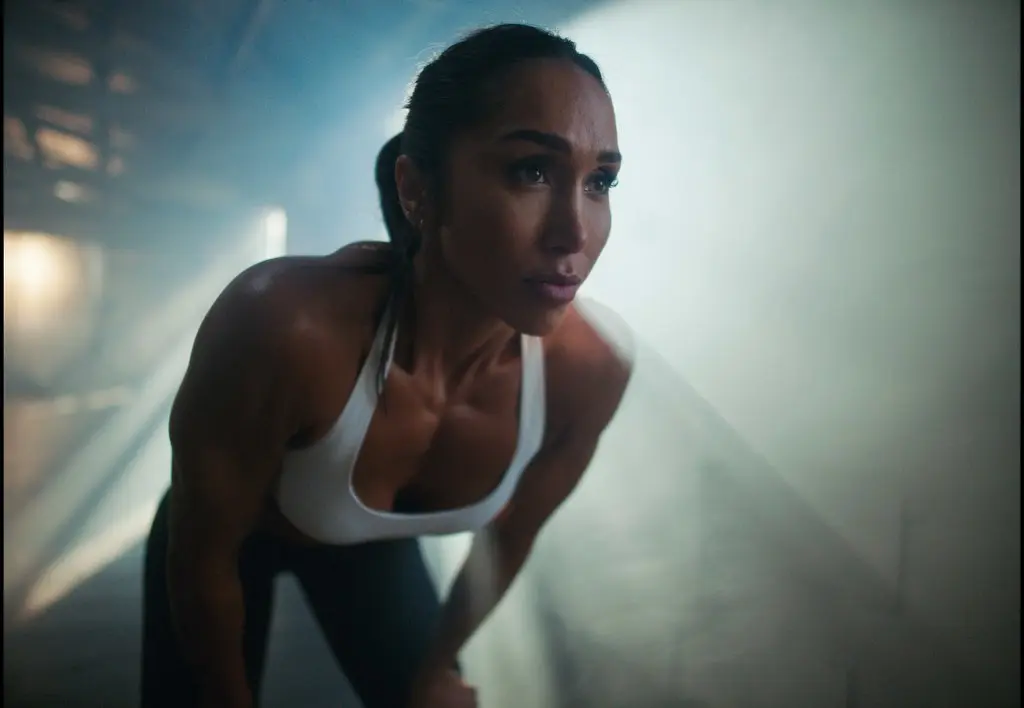6 Common Myths About High-Intensity Interval Training, Busted

May 6, 2022

We know that high-intensity interval training (aka, HIIT) is one of the most popular training styles amongst the Sweat Community. If you’ve ever done a high-intensity workout with the Sweat Trainers, you’ll know HIIT is one of the best ways to achieve a full-body workout and get your blood pumping.
The aim of HIIT is to raise your heart rate close to its maximum intensity, which is achieved by alternating periods of high-intensity cardio with recovery. The work to rest times typically depend on your goals or fitness level. Workouts are typically 15 to 45 minutes long, making HIIT particularly appealing if you’re short on time.
Multiple studies have shown HIIT training to improve cardiovascular and metabolic health, and it’s a popular training style for helping you improve your strength and fitness while promoting your overall health and wellbeing.

Common HIIT myths
Despite its popularity, there are several misconceptions associated with HIIT that can scare people off.
So, what is true about HIIT? Is it the right training style for you? What do you need to know before you get started?
HIIT will make you bulky
HIIT offers a full-body workout which helps you maintain lean muscle and improve your cardio.
Unlike weight lifting, which focuses on specific muscles, HIIT engages your whole body by incorporating a variety of movements that engage different muscle groups.
If you’re keen to increase your overall muscle mass, Kayla’s High Intensity Strength workouts are a great option. These workouts combine strength and muscle building exercises to leave you feeling fitter and stronger than ever before.
HIIT takes a lot of time
One of the best things about HIIT workouts is they’re short, sweet and flexible, meaning they’re easy to slot into even the busiest of days. In fact, according to research, a workout as little as 10-30 minutes can be enough to get results.
One study found that a 10–30 minute HIIT workout gives the same results as a moderate-intensity workout that’s twice as long, while another suggests that an intense 30-minute HIIT workout can do more for your body and health than even an hour of steady-paced training.
The point of HIIT is that it is high intensity, so you need to be pushing yourself and feeling challenged in those periods of work!
If you’re short on time, try one of our quick workouts in the On Demand tab in the Sweat app, like Chontel Duncan’s popular Express HIIT workout that will take you just 10 minutes.

You should only do HIIT
There’s no doubt that HIIT is an effective way to improve your overall health and wellbeing. However, it’s a varied routine that will truly get you results.
Just like your diet, exercise is about balance. If you're following a HIIT program in the Sweat app, a low-intensity session will be part of your weekly goals. Alternating your HIIT training days with slower strength training or days of lighter cardio or Pilates will help stave off workout boredom, allow your body to recover, and give you different ways to challenge yourself.
HIIT is not for beginners
HIIT is generally viewed as an intense workout that’s only suitable for people with an intermediate or advanced level of fitness.
However, the beauty of this training style is it can be tailored to your individual goals and fitness level by going at your own pace, and you don’t have to do advanced exercises to get results.
The key is finding a workout that suits you and that you enjoy. Having said this, women who are pregnant, 3-6 months postpartum and people with recent injuries or joint issues should seek professional health advice before starting HIIT.
The more HIIT you do, the better
Too much of any exercise can lead to burnout and if you push yourself beyond your body’s capabilities you risk injury too. As for your motivation? You’ll likely wave goodbye to that if you overdo it.
With any training, HIIT is about listening to your body, modifying workouts for your ability and mixing things up with other forms of gentler exercise. Take it from Kayla Itsines, who only does three high intensity workouts per week.
Rest and recovery are also important. Without this, you won’t be able to train at your best, meaning you won’t reap the health benefits.

HIIT needs a lot of equipment
One of the best things about HIIT is you can work out anytime, anywhere. Sure, equipment can make things fun and interesting, but you don’t need to go to a gym or have a room full of expensive equipment to get results from your HIIT training.
HIIT workouts with bodyweight exercises can be done at home and are just as effective at challenging you and getting your heart rate up. Think push-ups, squats and lunges, bicep curls (these could even be done with milk cartons if you don’t have any dumbbells handy!), burpees and step-ups.
There are a number of programs in the Sweat app that can be done at home or in the gym with minimal or no equipment.
Which HIIT program is right for you?
Ready to start reaping the benefits of this popular training style? Take a look through this guide to the programs available in the Sweat app, or try a workout in the On Demand tab today!

A more empowered you starts with Sweat, and our editorial team is here to bring you the latest fitness tips, trainer recommendations, wellbeing news, nutritional advice, nourishing recipes and free workouts.
* Disclaimer: This blog post is not intended to replace the advice of a medical professional. The above information should not be used to diagnose, treat, or prevent any disease or medical condition. Please consult your doctor before making any changes to your diet, sleep methods, daily activity, or fitness routine. Sweat assumes no responsibility for any personal injury or damage sustained by any recommendations, opinions, or advice given in this article.
Fitness